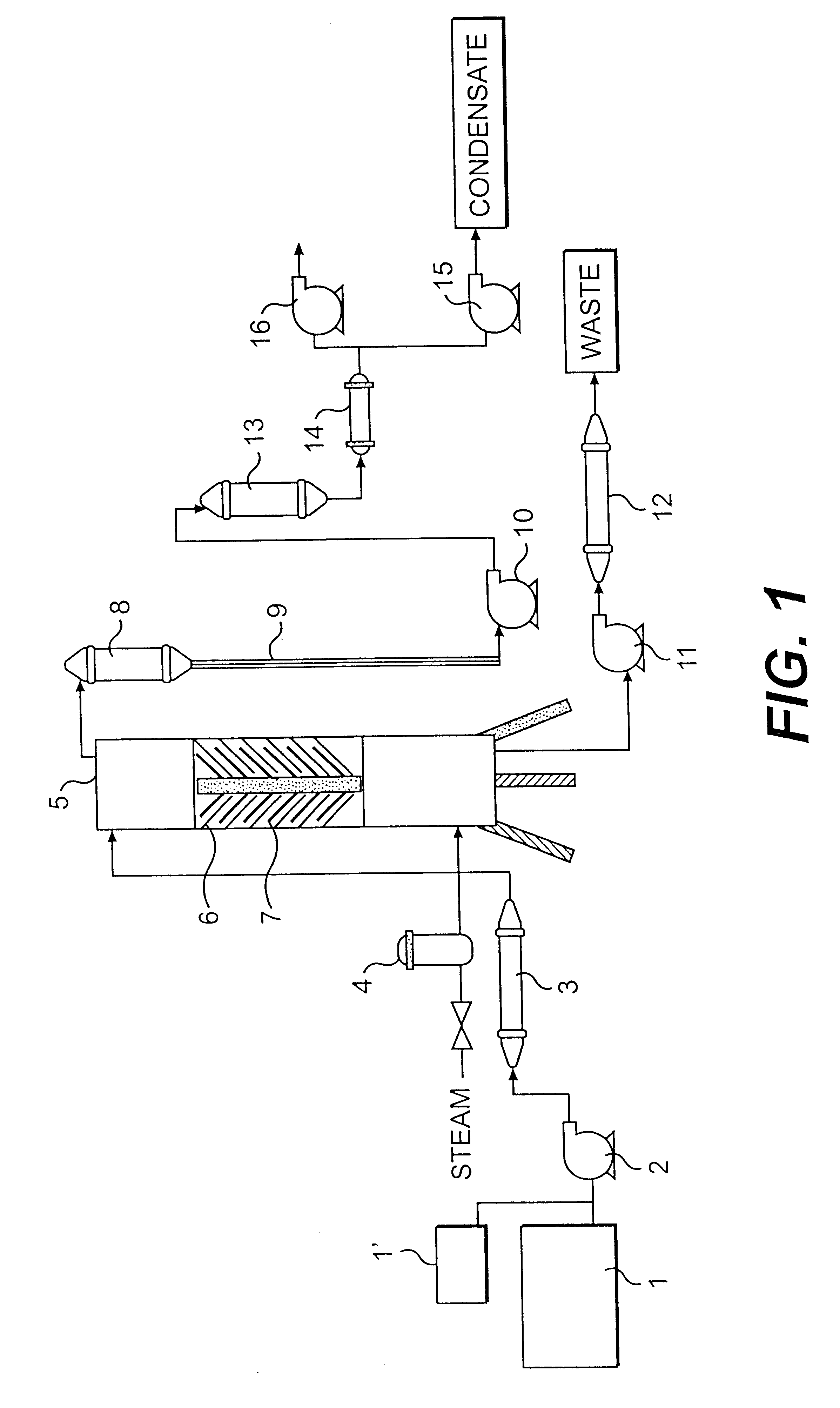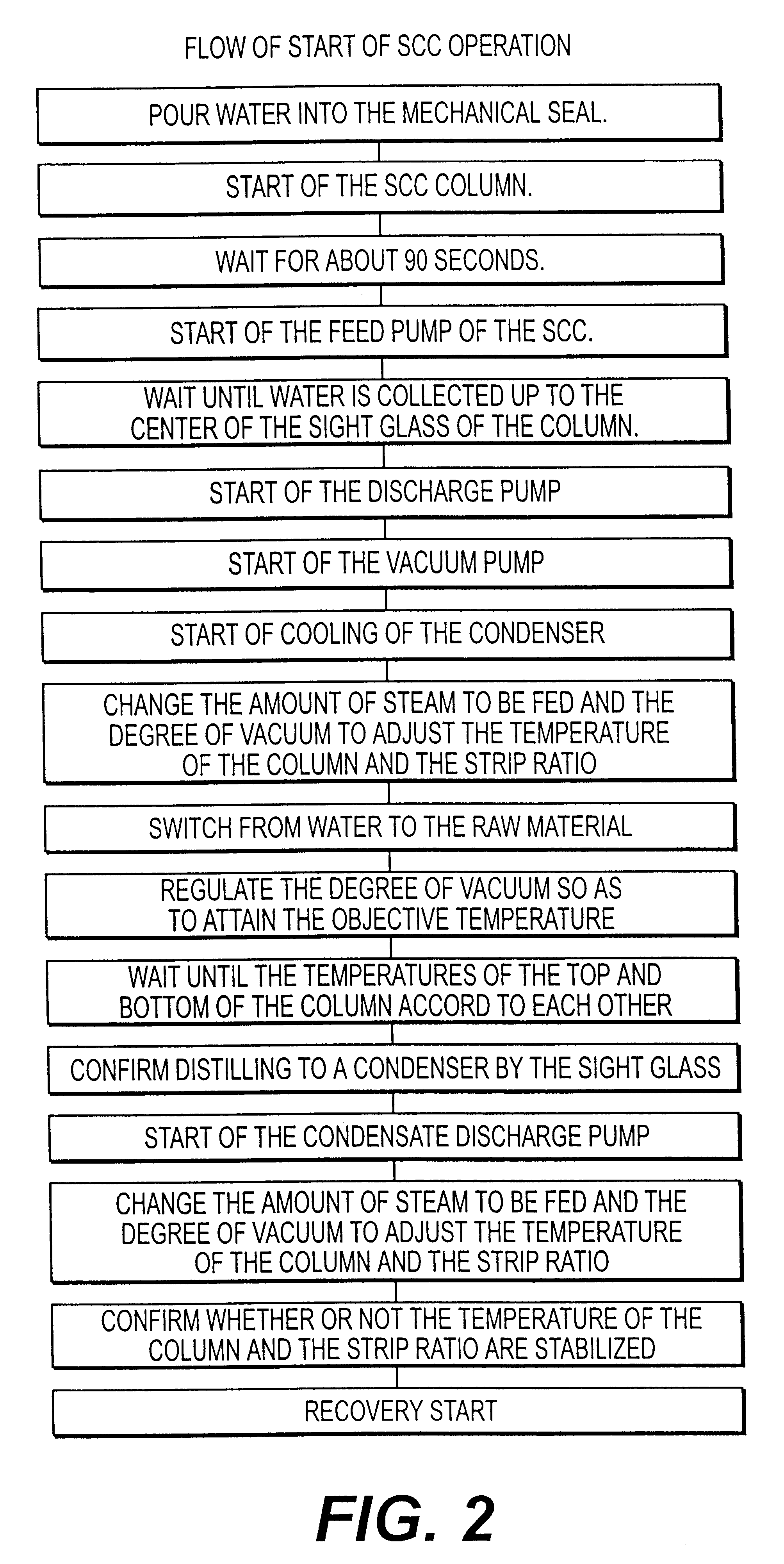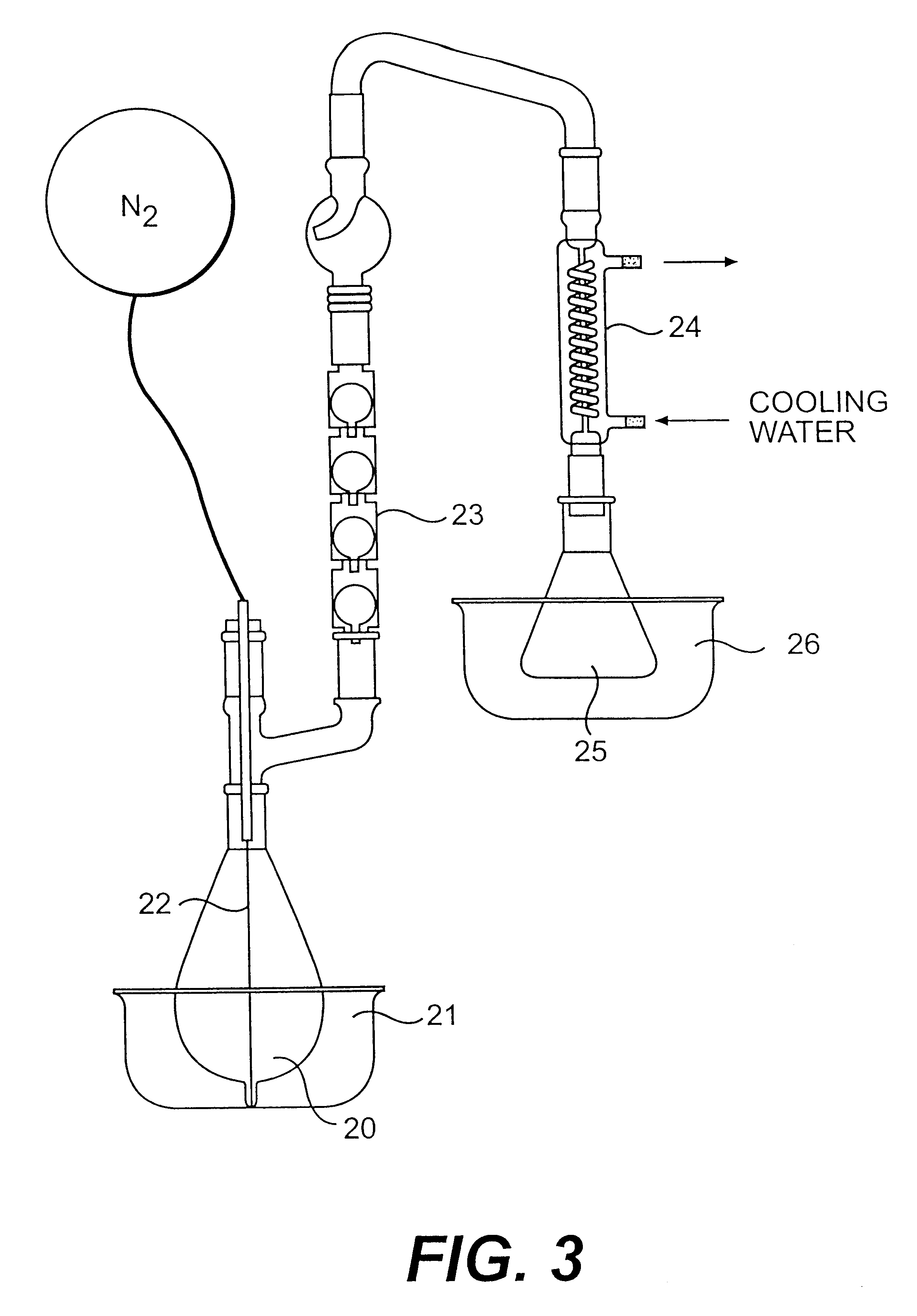Method of sugar-like flavorous component and method of preparation of perfumery composition or beverage using the resulting flavorous component
a flavorous component and flavorous technology, applied in the direction of essential oils/perfumes, biochemistry apparatus and processes, fatty substance production, etc., can solve the problems of difficult feed, insufficient extraction of water-soluble low molecular weight components, and no devised method of utilizing the flavorous component of molasses
- Summary
- Abstract
- Description
- Claims
- Application Information
AI Technical Summary
Problems solved by technology
Method used
Image
Examples
examples 1-3
Molasses (manufactured by Sansho, Brix: 75) was used as raw materials 1 and 2 and molasses (manufactured by Sansho, differing from the raw materials 1 and 2 in lot, Brix: 75) was used as a raw material 3.
According to the aforementioned process flow of FIG. 2, the SCC feed tank was charged with 800 kg of ion exchange water and in succession, 400 kg of molasses, which has been heated, was added with stirring to be dissolved. After the molasses was dissolved, 12 kg of ethanol was added and dissolved in the solution. The resulting solution was fed to the SCC at a feed rate of 500 l / h and at strip rates of about 2.5%, 5% and 2.5% for the raw materials 1, 2 and 3 respectively at a column temperature of 40 to 60.degree. C. Thus a flavor component was recovered in about 2.5 hours. Each amount of the flavor components recovered from the raw materials 1, 2 and 3 were 27 kg, 55 kg and 27.5 kg respectively. The properties of each of the resulting components were as follows. In the table, the sp...
comparing example 3 (
alcohol is added) with Comparative Example 2 (no alcohol is added) in the ratio of components, the total amount of flavors is larger in Comparative Example 2 (no alcohol is added). It seems that there is no large difference when these flavors are classified by functional groups. However, comparing each component in the flavor balance, the proportion of the amount of components including .beta.-damascenone, octanal, phenylethyl acetate, amyl alcohol, ethyl caprylate, ethyl nonanate and ethyl caprate to the total amount of flavors is larger in Example 3. Each threshold value of, particularly, .beta.-damascenone, octanal and phenylethyl acetate is low, which is supposed to contribute to the sugar-like flavor.
Example 4
Using the molasses flavor (sugar-like flavor component) obtained in Example 1, a rum flavor was prepared according to the following formulation.
Example 5
Using the molasses flavor (sugar-like flavor component) obtained in Example 2, a tea beverage (non-sugar) was prepared a...
example 4
This has the individual sweetness of rum and produces a better mild rum flavor.
Controls This seems to have a fermented odor accompanied by an ester odor, specifically, a chemical odor without the individual sweetness of rum.
PUM
 Login to View More
Login to View More Abstract
Description
Claims
Application Information
 Login to View More
Login to View More - R&D
- Intellectual Property
- Life Sciences
- Materials
- Tech Scout
- Unparalleled Data Quality
- Higher Quality Content
- 60% Fewer Hallucinations
Browse by: Latest US Patents, China's latest patents, Technical Efficacy Thesaurus, Application Domain, Technology Topic, Popular Technical Reports.
© 2025 PatSnap. All rights reserved.Legal|Privacy policy|Modern Slavery Act Transparency Statement|Sitemap|About US| Contact US: help@patsnap.com



